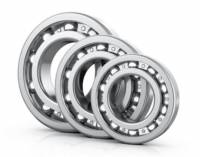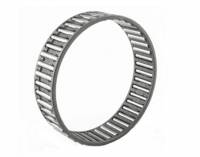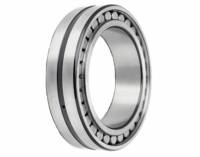Bearings are a crucial component in the machine sector. They are employed in various applications and are often referred to as the unsung heroes in machines because they operate in secrecy.
Like other machine components, bearings come in a wide range of shapes, sizes and designs to execute different roles in machines. At TFC, we carry an extensive range of high-quality industrial bearings to power the industrial world. Although a small component, choosing the right bearing is just as important to keep machines functioning properly and longer.
What are Bearings?
In industrial settings, the application of bearings is both straightforward and vital for our survival.
About Industrial Bearings
Industrial bearings play a crucial role in various applications across industries. Here are some key roles and functions of industrial bearings:
- Reducing Friction: Bearings are primarily designed to minimize friction between moving parts. By providing a smooth surface for contact, they allow rotational or linear movement with minimal resistance, enhancing efficiency and reducing energy consumption.
- Supporting Loads: Bearings are responsible for supporting and distributing loads. They bear the weight and forces exerted on rotating or moving components, ensuring stability and preventing excessive wear or damage.
- Enabling Smooth Movement: Bearings enable smooth and precise movement of machinery and equipment. They facilitate rotational motion in motors, wheels, and gears, as well as linear motion in conveyor belts, slides, and actuators.
- Absorbing Shock and Vibration: Bearings help absorb shock and dampen vibrations generated during operation. This prevents excessive stress on components and contributes to the overall durability and reliability of the system.
- Allowing Misalignment Compensation: Some types of bearings, such as spherical bearings, can accommodate misalignment between shafts or parts. They provide flexibility and compensate for slight angular or axial deviations, ensuring proper operation and reducing the risk of component damage.
- Enhancing Precision and Accuracy: High-precision bearings are crucial in applications that require accuracy, such as machine tools, robotics, and measurement equipment. They minimize any deviation or play, enabling precise positioning and maintaining consistent performance.
- Withstanding Harsh Conditions: Industrial bearings are designed to operate in various challenging environments, including high temperatures, corrosive substances, and heavy loads. They are often made from materials with excellent resistance to wear, heat, and chemical exposure to ensure longevity and reliability.
- Enabling Maintenance and Serviceability: Bearings are modular components that can be easily replaced, allowing for efficient maintenance and repair of machinery. This reduces downtime and enhances overall productivity.
In summary, industrial bearings are essential components that enable smooth movement, reduce friction, support loads, absorb shocks, and contribute to the efficiency, reliability, and longevity of machinery and equipment in various industries.
Types of Industrial Bearings
Even simple components like industrial bearings come in different configurations to suit every application. We design and engineer our bearings for specific functions and support different loads. We have different types of industrial bearings to suit each application.
Ball bearings
This is the most common type of industrial bearing. Ball bearings feature household items like bicycles, fishing rods, food processors, hair dryers, washing machines, fax machines and hard drives.
Industrially, you can find ball bearings in elevators, assembly lines, chain saws, automotive, engines, and toy manufacturing. Ball bearings offer many advantages and also some downsides. It’s vital to know their best and worst to help you determine if they’re ideal for the application.
Advantages of ball bearings
- They don’t require much lubrication
- They have a long service life
- They are low priced
- Can handle thrust hold
- Good wear resistance
Disadvantages of ball bearings
- They can break easily under shock
- Ball bearings, when properly installed and lubricated, are generally known for their smooth and quiet operation. However, it is possible for ball bearings to generate noise under certain conditions or if there are specific factors at play
- Limited Load Capacity
Needle bearings
We have different types of needle bearings, including needle roller and cage assembly, shell-type needle roller bearings, machined ring needle roller bearings, and thrust needle roller bearings.
The bearing facilitates flawless rolling action with several needle rollers put between two hardened, smooth surfaces and a cage. The cage prevents the needle rollers from touching one another.
Generally, needle roller bearings have tiny roll bearing application diameters and a high length-to-diameter ratio, increasing load-carrying capacity. It also makes them perfect for the oscillation motion.
They are found in applications such as transmissions, drive shafts, cam followers, crankshafts, gearboxes, and suspension systems.
Advantages of needle bearings
- High Load-Carrying Capacity: Needle bearings have a high load-carrying capacity, particularly in applications with limited space or where a compact design is required. The long and thin rollers distribute the load over a larger surface area, enabling them to support heavy radial loads.
- Compact Design: Needle bearings have a compact and lightweight design compared to other types of bearings. Their small size allows for efficient integration into space-constrained applications and machinery, contributing to overall weight reduction and compact system design.
- High Radial Rigidity: Needle bearings exhibit high radial rigidity due to the large number of needle rollers in contact with the raceways. This rigidity helps maintain accurate positioning and prevents excessive deflection or deformation under load.
- Reduced Friction: The rolling motion of the needle rollers reduces friction compared to plain bearings. This results in lower energy consumption, improved efficiency, and reduced heat generation during operation.
- High-Speed Capability: Needle bearings are well-suited for high-speed applications. The small mass and low friction of the needle rollers allow them to roll smoothly at high rotational speeds, enabling efficient power transmission.
- Misalignment Compensation: Needle bearings can accommodate slight misalignments between shafts or components. The needle rollers’ flexibility helps compensate for minor deviations, reducing stress on the bearing and associated components.
Disadvantages
- Limited Load Distribution
- Sensitivity to Misalignment
- Higher Friction and Wear
- Higher cost
- Lower Axial Load Capacity
Roller bearings
Our roller bearings come in three configurations: cylindrical roller bearings, spherical roller bearings, and tapered roller bearings.
This range of bearings is known for its excellent stiffness, low friction, and long-serving duration. However, they are not for high-speed applications and increased heat due to large contact surfaces.
Besides our extensive range of industrial bearings, you can rely on our leading technology and engineering to deliver quality bearings built to the highest standards and to the most accurate specifications.






















Follow us